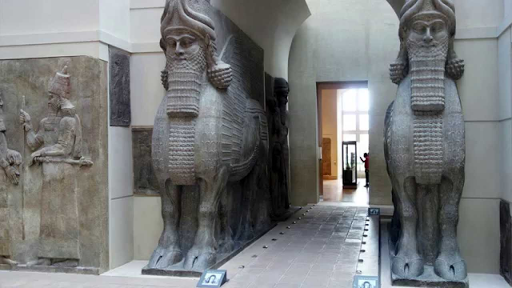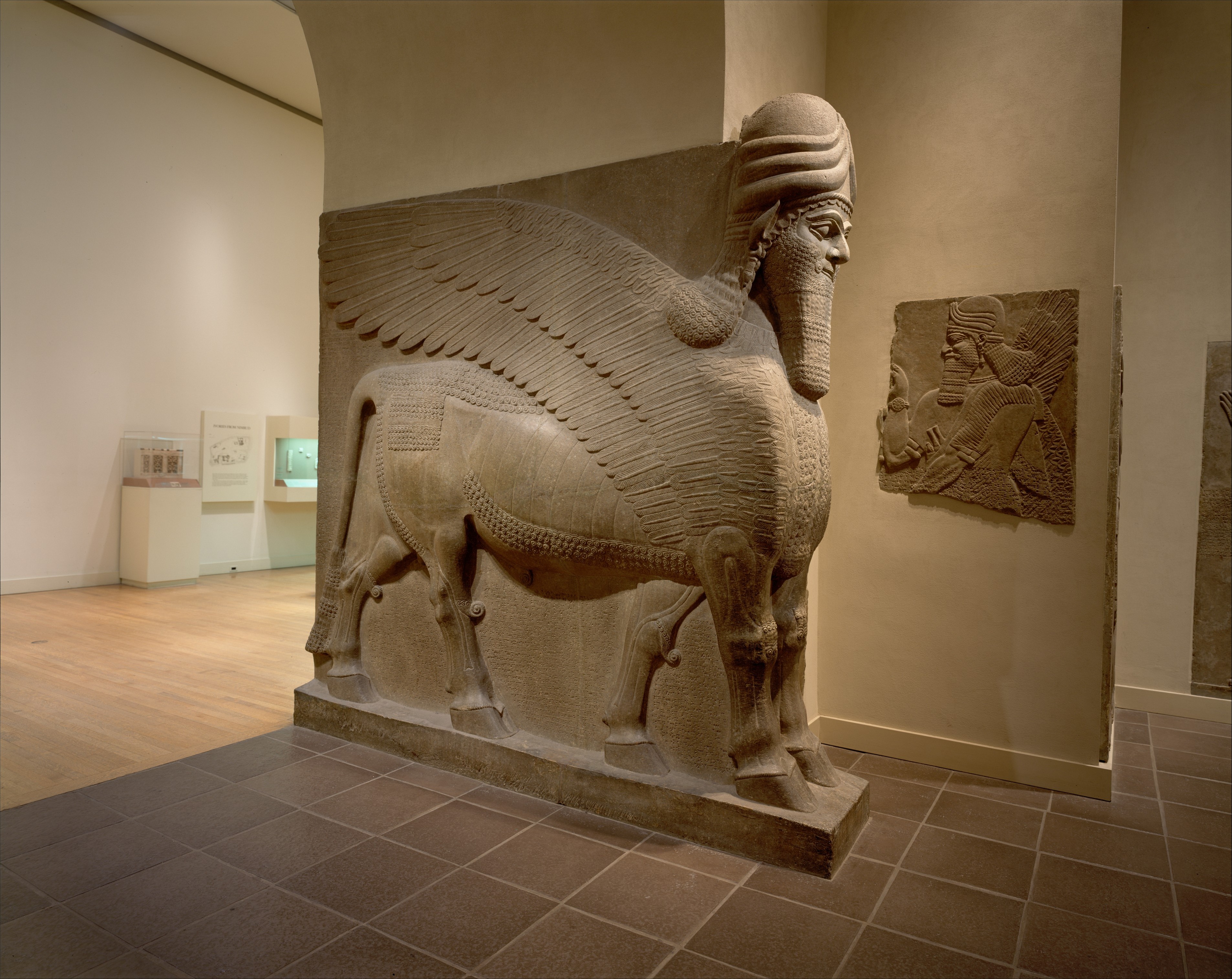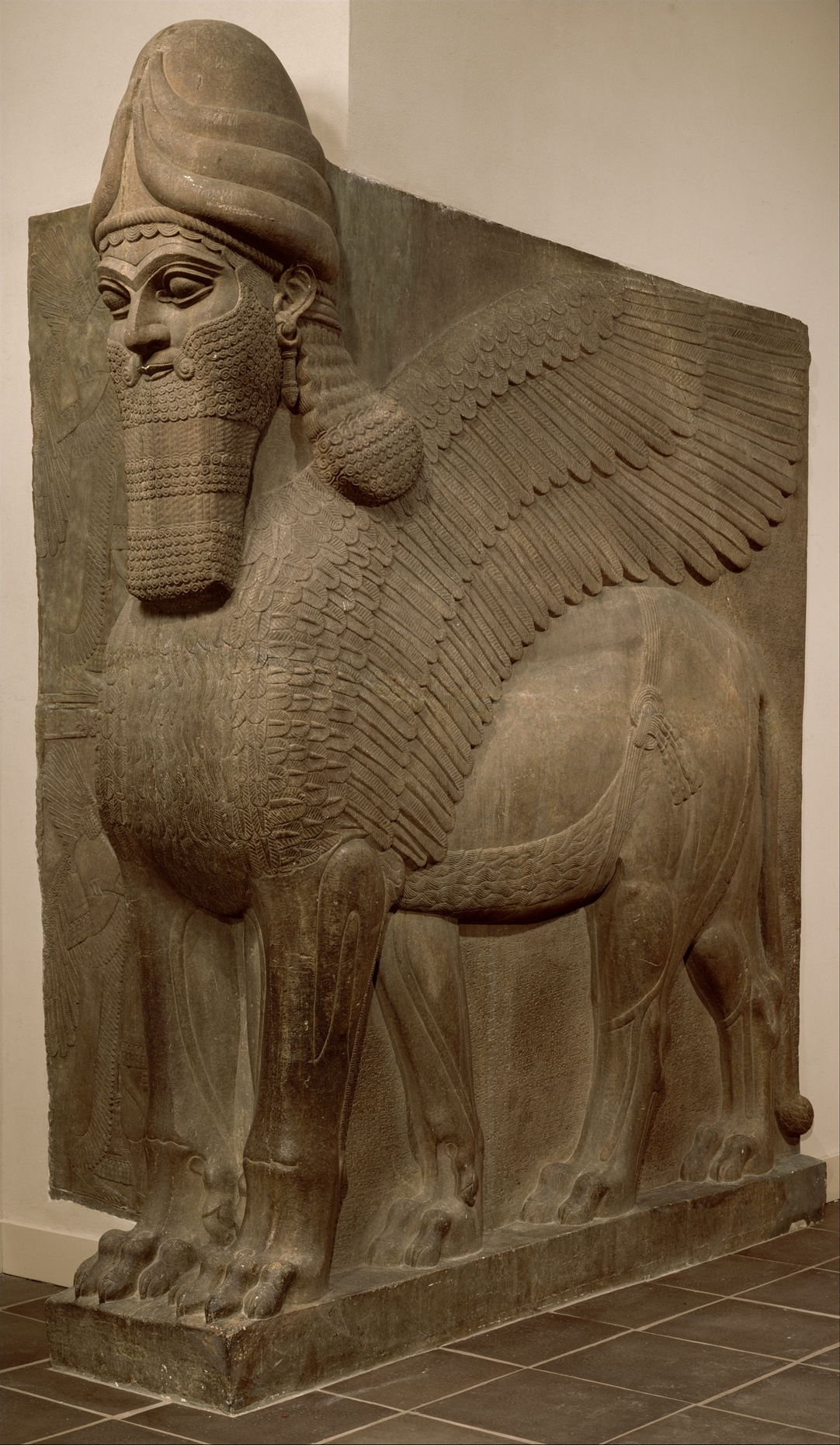The Assyrians envisioned a protective spirit that was part bull and part human and sometimes part eagle. Start studying AP Art History Midterm review.

Where Were The Lamassu Sculptures Originally Displayed Elephantartdrawingsketchestattooideas
The winged beasts from Nimrud in Iraq the ancient city of Kalhu also became quite famous when Lamassu there were ruined in 2015.

. The British Museum is a public museum dedicated to human history art and culture located in the Bloomsbury area of London. The most famous colossal statues of Lamassu have been excavated at the sites of the Assyrian capitals established by King Assurnasirpal II reigned 883 859 BCE and King Sargon II reigned 721 705 BCE. You can see them at Gate of All Nations at Persepolis in Iran the British Museum in London the Louvre in Paris the National Museum of Iraq in Baghdad the Metropolitan Museum of Art in New York and the University of Chicago Oriental Institute.
Which work has a king approaching the god Shamash. Also know where were the lamassu sculptures originally displayed. Where were the Lamassu sculptures originally displayed.
Lamassu were supernatural spirits sometimes called demons or genies depending on which language youre translating from who served to protect the gods as well as the important human structures. Also which movement was the foundation for Surrealism. The Ziggurat at Ur was a fortress funerary monument palace temple platform Where were the Lamassu sculptures originally displayed.
Intended for public display. 721-705 BCE Part of a collection at the Louvre in Paris France. The room is not a full reconstruction.
The entrance of a fire temple in Fort Mumbai displaying a lamassu Head of lamassu. This replica was made with 10000 Iraqi date syrup cansand serves as a symbol of. The Lamassu sculptures were recovered from where.
Larger wider naves. Alabaster The Assyrian lamassu sculptures are partly in the round but the sculptor nonetheless conceived. The Lamassu seen from the side from the palace Sargon II r.
Assyrian sculpturetypically placed prominent pairs of lamassuat entrances in palaces facing the street and also internal courtyards. Many aspects of the palaces original appearance remain unknown and the sculptures themselves come originally from multiple rooms although together they are. The first change was the capital was moved to Dur Sharrukin present day Khorsabad and second the Lamassu was presented on a bulls body compared to a lions and seems to be slightly smiling.
Museum of the Ancient Orient Istanbul. Head of a lamassu from the palace of Esarhaddon from Nimrud Iraq seventh century BC the British Museum. The Ziggurat at Ur was a fortress funerary monument palace temple platform Where were the Lamassu sculptures originally displayed.
The Lamassu sculptures were recovered from where. Marble eighth century BC from Assur Iraq. A Sargons palace b Gudeas Lagash c Ashurbanipals palace d Ziggurat at Ur Which of the following played an important role in the shaping of modern art.
First of all the figure has five legs. Assyrian sculpture is the sculpture of the ancient Assyrian states especially the Neo-Assyrian Empire of 911 to 612 BC which ruled modern Iraq Syria and parts of IranIt forms a phase of the art of Mesopotamia differing in particular because of its much greater use of stone and gypsum alabaster for large sculpture. The most famous colossal statues of Lamassu have been excavated at the sites of the Assyrian capitals created by King Assurnasirpal II reigned 883 859 BC and King Sargon II reigned 721 705 BC.
An American professor named Michael Rakowitzwas commissioned to recreate this Lamassu sculpture and it is now displayed in Trafalgar Square in London. Which is not true for Middle Byzantine architecture. They wererepresented as double-aspect figures on corners in high relief.
The Ziggurat at Ur was a fortress funerary monument palace temple platform Where were the Lamassu sculptures originally displayed. Where were the Lamassu sculptures originally displayed. Colossal Lamassu Sculpture From The Palace Of Sargon Ii At Khorsabad Sargon Ii Google Arts Culture Human Headed Winged Bull Lamassu Assyrian Neo Assyrian The Metropolitan Museum Of Art Share this post.
In the Assyrian mythology there were human headed winged bullslions that were protective genies. These massive sculptures served as symbolic guards of Assyrian kings domain being placed at the entrance to both the city and palace gateways See Collins 2008 72. Appreciating and understanding ancient Egyptian art.
Learn vocabulary terms and more with flashcards games and other study tools. What ethnic group is credited with the first system of writing known to man. The British Museum was the first public national museum in the world.
Which work has a king approaching the god Shamash. The first change was the capital was moved to Dur Sharrukin present day Khorsabad and second the Lamassu was presented on a bulls body compared to a lions and seems to be slightly smiling. The Assyrian Sculpture Court Gallery 401 displays sculptures from the Assyrian capital city of Nimrud ancient Kalhu in a space designed to evoke their original palace setting.
It documents the story of human culture from its beginnings to the present. In some cases the lamassu statues were accompanied by. What ethnic group is credited with the first system of writing known to man.
Originally unearthed in Rome and displayed in the Borghese Gallery it was sold to the occupying French and now sits in the Louvre. Much the best-known works are the huge lamassu guarding.

Lamassu From The Citadel Of Sargon Ii Video Khan Academy

Lamassus At The Louvre Thatmuse

Art History Blogger February 2012

Lamassu From The Citadel Of Sargon Ii Video Khan Academy

Human Headed Winged Bull Lamassu Assyrian Neo Assyrian The Metropolitan Museum Of Art

Lamassu Backstory Article Assyrian Khan Academy

Human Headed Winged Lion Lamassu Assyrian Neo Assyrian The Metropolitan Museum Of Art

25 Lamassu From The Citadel Of Sargon Ii Dur Sharrukin Modern Iraq Ap Art History
0 comments
Post a Comment